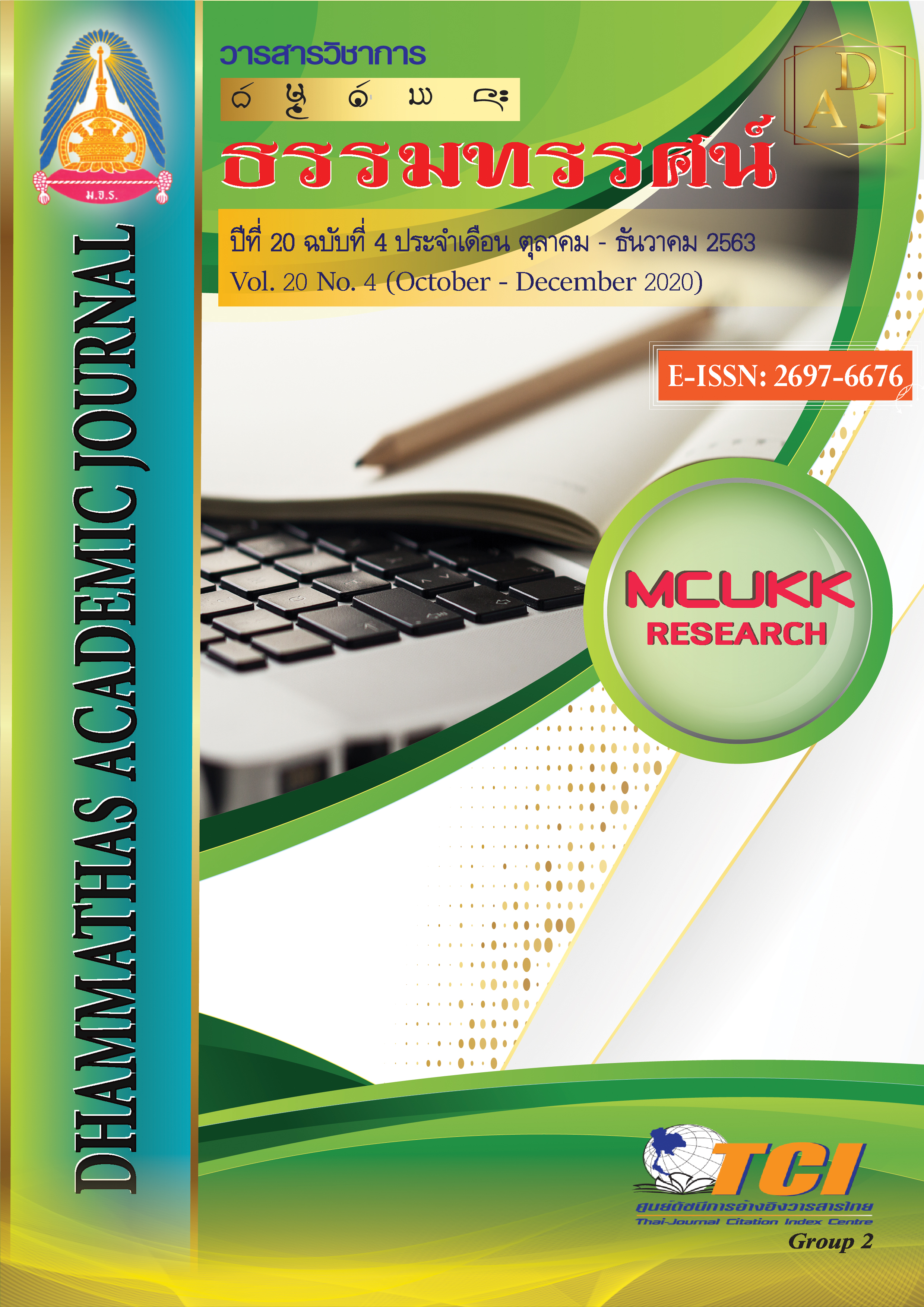The Development of Critical Thinking Test for Grade 9th Students based on Facione’s Concept
Main Article Content
Abstract
The purposes of this research were: 1) to develop the critical thinking test for grade 9th students, 2) to examine the quality of test and 3) to construct the norms of test. The sample was 1,091 students selected by stratified random sampling technique who were studying grade 9th at Saraburi in the 2018 academic year. The quality of the test was measured by index of item objective congruence (IOC) for content validity,
difficulty, item-total correlation for discrimination power, Pearson product moment correlation coefficient for concurrent validity, construct validity was measured by second order confirmatory factor analysis and reliability of the test by Kuder-Richardson’s KR-20 formula.
The findings were:
1. The critical thinking test has 41 items, comprised of six component; 1) interpretation 2) analysis 3) evaluation 4) inference 5) explanation and 6) self-regulation.
2. The item objective congruence (IOC) of the test ranged from 0.67 to 1.00 , the item difficulty ranged from 0.30 to 0.80, the item discrimination power ranged from 0.21 to 0.68, the reliability of the test was 0.91, the concurrent validity was 0.75 and for construct validity, the model was consistent with empirical data as its x2 = 794.39 df = 651 x2 = 1.22 CFI = 1.00 GFI = 0.93 AGFI = 0.90 RMSEA = 0.02 and RMR = 0.01.
3. The local norms of the test were; 1) T-scores less than 35 or raw scores from 0 to 14 for a very low level of critical thinking 2) T-scores from 35 to 45 or raw scores from 15 to 25 for a low level of critical thinking 3) T-scores from 46 to 55 or raw scores from 26 to 36 for a medium level of critical thinking 4) T-scores from 56 to 65 or raw scores from 37 to 38 for a high level of critical thinking and 5) T-score more than 65 for a very high level of critical thinking.
Article Details
References
Arneksuk, S. (2016). Statistical methods in research. Chonburi : Burapha University.
Facione, P. A. (2015). Critical Thinking: What It Is and Why It Counts. http://www.insightassessment.com (Accessed 5 February 2018).
Pattanaphon, A. (2008). A construction of critical thinking test for the third Level students in secondary school, Nakhonsawan educational service Area office 1. Bangkok : Srinakharinwirot University.
Sariwat, L. (2006). The thinking. Bangkok : O.S. printing house.
Srisopa, A. (1981). Educational measurement and evaluation. Bangkok : Thai Wattana Panich.
Thaweerat, P. (1997). Research methods for the Behavioraland social sciences. Bangkok : Srinakharinwirot University.
Thongbu, S. (2012). Educational research. Mahasarakham : Arpichat printing.
Tirakanan, S. (2007). A construction of variables measure toolfor social science research: guidelines for action. Bangkok : Chulalongkorn University printing.
Wanitbancha, K. (2013). Structural Equation Modeling (SEM) by AMOS. Bangkok : Samlada partnership limited.
Wattson, G. and Glaser, E. M. (1964). Wattson Glaser Critical Thinking Appraisal Manual. New York : Harcourt, Brace and World.
Wiratchai, N. (1999). LISREL Model: Statistical analysis for research. Bangkok : Chulalongkorn University printing.

